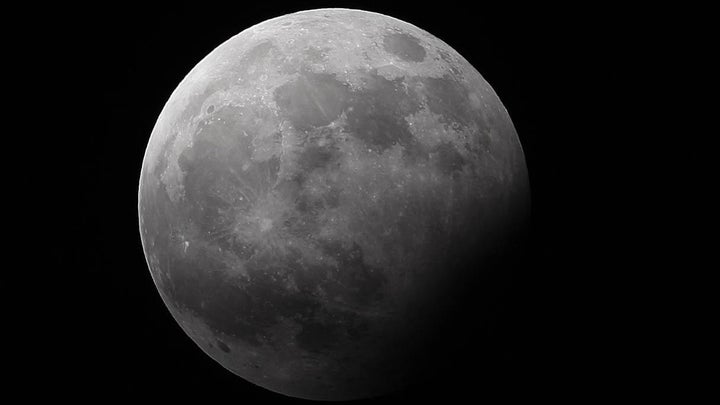
A partial lunar eclipse is set to be visible across parts of the UK on Tuesday night – as long as the clear weather holds up.
Not only is the event special in its own right, but it’ll also coincide with the 50th anniversary of the Apollo 11 launch today – a bonanza for stargazing fans.
[Read More: Nasa’s Mind-Blowing Eclipse Picture Is Unique]
What Is A Partial Lunar Eclipse?
A partial lunar eclipse happens when the Earth moves between the sun and the full moon – but they are not precisely aligned (which would create a full eclipse).
The moon moves into the shadow of the Earth and dims dramatically but usually remains visible, lit by sunlight that passes through the Earth’s atmosphere.
During a partial lunar eclipse, part of the moon can also get a reddish hue. This isn’t actually red, it just appears that way to people observing from the ground due to the powerful atmospheric scattering of blue light hitting the surface.
When Will I Be Able To See The Partial Lunar Eclipse?
You will be able to see the partial eclipse in the UK from moon rise, which begins at approximately 9.07pm, until around 1.17am.
According to the Royal Astronomical Society, the peak time to watch it is during the mid-eclipse at 10.30pm, when about 60% of the visible surface of the moon will be covered.
Where Will I Be Able To See It?
From anywhere in the UK. Try to move away from light pollution as much as possible to get the full impact.
Dr Morgan Hollis from the Royal Astronomical Society said: “You’re looking for anywhere that has a low unobstructed horizon, no tall buildings and trees in the way.”
The event will also take place over much of Asia, Africa, eastern parts of South America, and the western parts of Australia.
Do I Need Glasses Or Special Equipment?
Dr Hollis said unlike a solar eclipse, it’s entirely safe to watch a lunar eclipse with the naked eye, so you don’t need any special equipment. “Given temperatures recently, it should be good if the weather is clear and the conditions are clear,” she added.